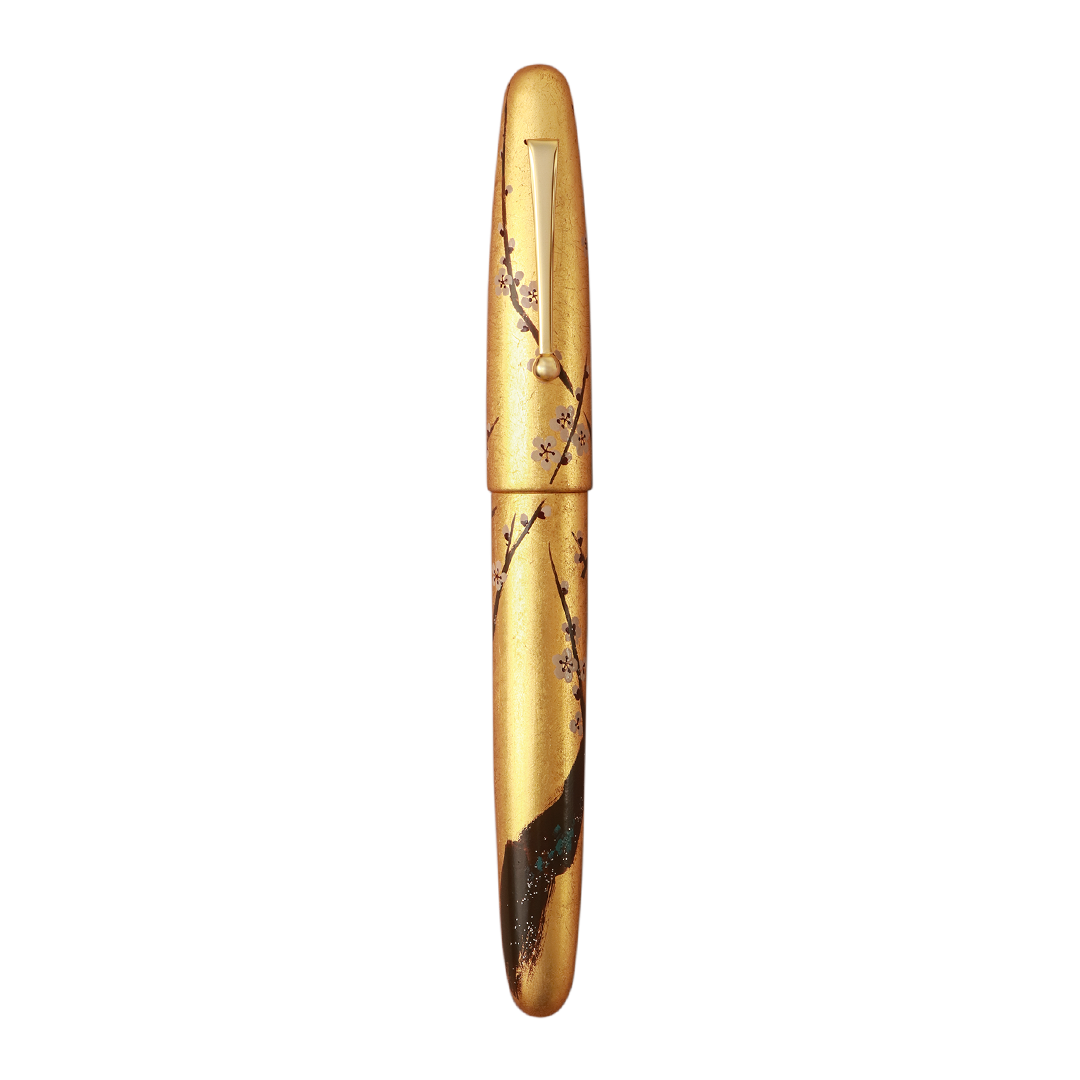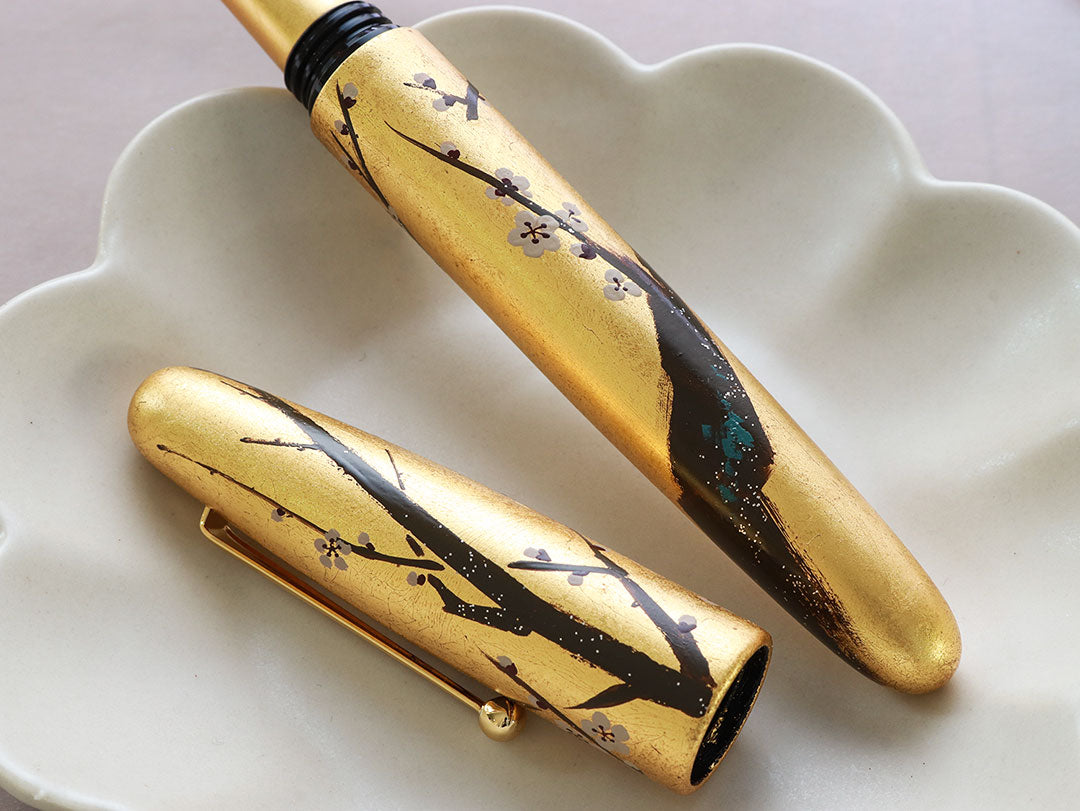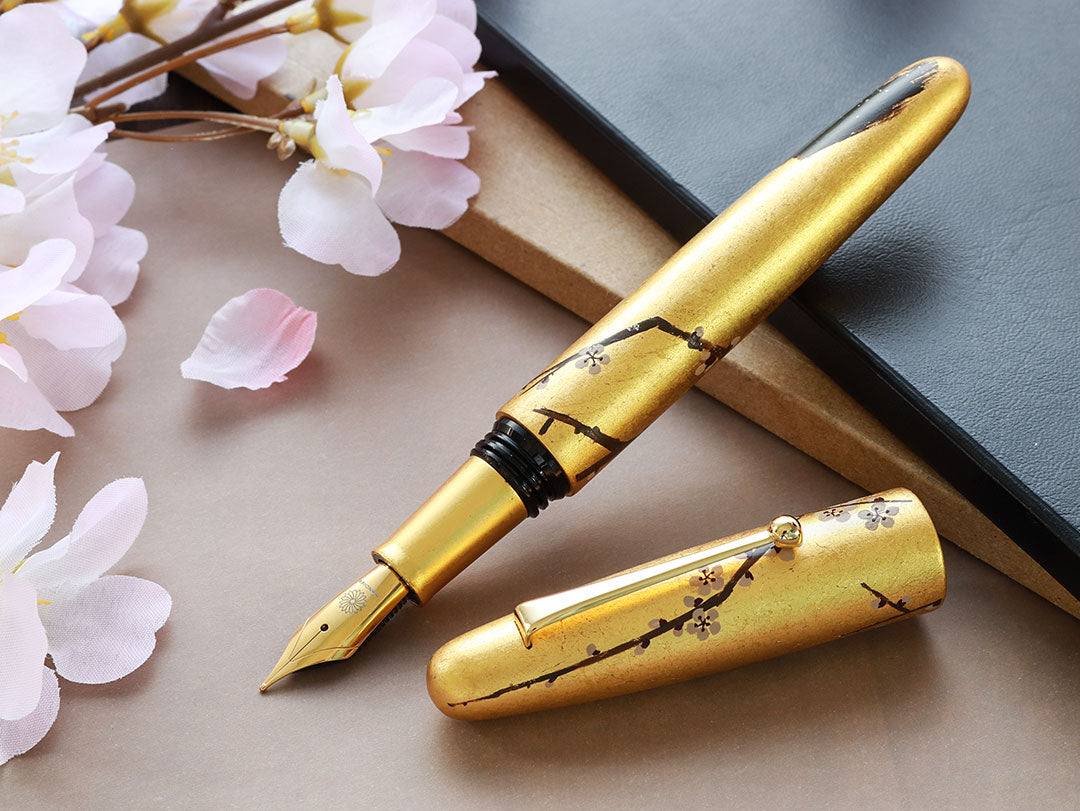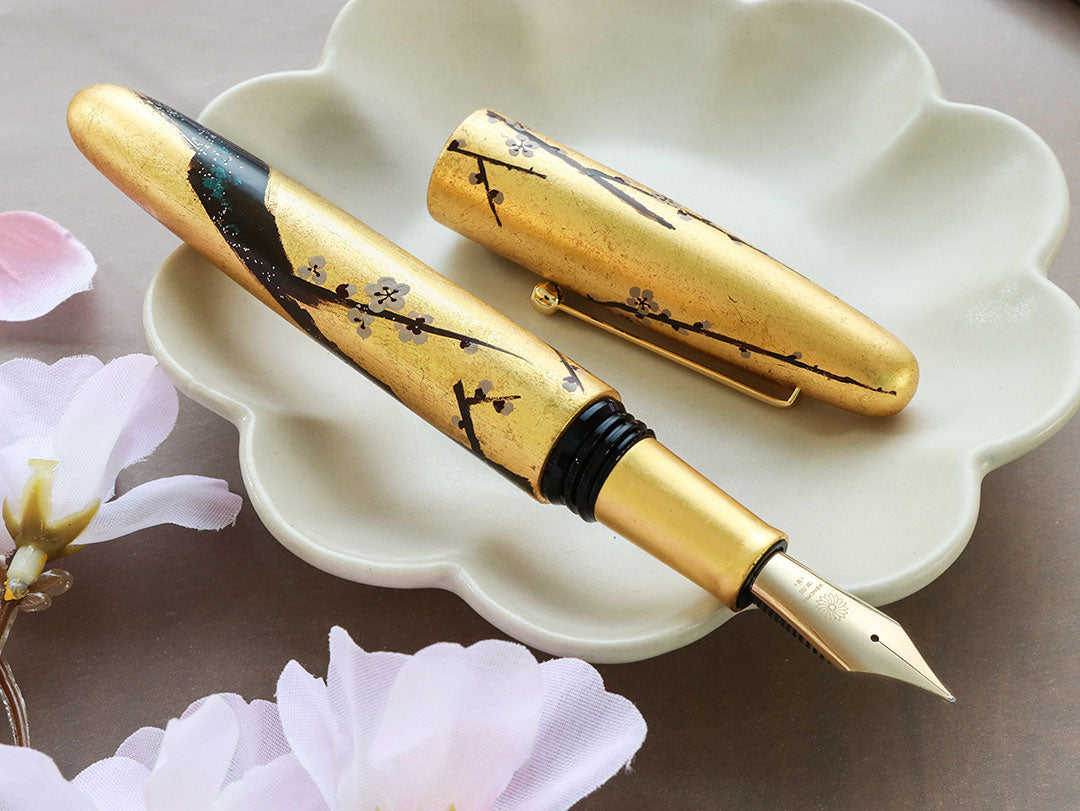Hirota Urushi - Kinpaku Maki-e - Shiro No Ume
Hirota Urushi - Kinpaku Maki-e - Shiro No Ume
Couldn't load pickup availability
Description
Description
Important Notice: The hand-making process makes every single pen a unique one; there is no pen exactly resembling one another. The one you will receive might be slightly different from the one here in the pictures, but if you appreciate the beauty of hand-craftsmanship, you will be happy with the pen we've made for you.
Hirota Urushi
Hirota Urushi is the Japanese traditional Urushi art hand-crafted by master Hirota Yoko (廣田洋子). Master Hirota's artworks are unique in designs and techniques, which are hard to find among common Urushi lacquerware.
There are 4 main techniques normally used in Master Hirota's art:
- 櫛目堆漆塗 (Kushime Tsuishitsu Nuri)
- 金箔 (Kinpaku)
- 石目堆漆塗蒟醤 (Ishime Tsuishitsu Nuri)
- 金彩ひび塗 (Kinsai Hibi Nuri)
Fountain pens from Hirota collection are handmade one by one and require years to create. Therefore, each design is limited to only 1-3 pieces.
Kinpaku
Kinpaku is the technique of laying thin gold leaves on art objects, writing tools, tableware, and religious objects. This is done to refine and polish the appearance.
Kinpaku Maki-e Collection
Master Hirota's artisan fountain pen design is a testament to meticulous craftsmanship and unwavering attention to detail. In her latest creation, she weaves a narrative of storytelling through meticulously hand-drawn Maki-e, artfully depicting the enchanting beauty of flora.
Embracing Nature's Imperfections
In the realm of pen craftsmanship, every stroke bears the discerning touch of Master Hirota. Her drawing captures botanical wonders with a meticulous eye for detail. When exploring the intricate world of Maki-e, one cannot help but notice the delicate nuances: overlapping leaves, tender sprouts, moss on tree bark, even leaves nibbled by caterpillars - no minuscule element escapes her gaze.
While some may assume that only flawlessly pristine florals meet her exacting standards, Master Hirota perceives perfection through imperfection, finding a beauty that resonates with nature's authenticity.
Pen Design: Shiro no ume (The White Plum flower)
In Japanese literature, the white plum flower, known as "Shiro no ume," symbolizes the beginning of life's journey. Its name, Ume, closely resembles the Japanese verb "Umu," meaning "to be born." As spring unfolds, the Ume flower emerges among the first blossoms, signaling hope and renewal.
Master Hirota eloquently captures the essence of the Ume flower, likening it to a person of remarkable tenacity. Just like the Plum tree endures the shivering winter and gusts of cold wind, the Ume flower persists, eventually blooming with exquisite elegance.
Through the harshness of winter, the Ume flower stands resolute, embodying the strength to overcome adversity. Its unwavering spirit becomes a testament to resilience, inspiring us to navigate life's challenges with grace and fortitude.
In witnessing the Ume's journey, we glean a profound lesson: the importance of enduring with unwavering resolve and never losing sight of the beauty that awaits beyond hardships. From the depths of wintry trials, emerges a soul that has been shaped, strengthened, and enriched, embracing life with a newfound wisdom.
Pen Body
The whole body of the pen is covered with gold leaf sheet or Kinpaku with more than one layer. Therefore, delicate care for the body is highly recommended. Like every Urushi pen, Hirota Kinpaku Maki-e pens must be stored in a low-humidity environment and must be refrained from long exposure to direct sunlight to protect their color.
The original design by Master Hirota's inspiration came from her very own garden. Every day the plant is on her side, passing the time together.
About Master Hirota Yoko
With a great interest in traditional handmade crafts since elementary school, Master Hirota decided to choose this path and developed a strong passion for Japanese Urushi-making traditions. Master Hirota now has more than 30 years of hands-on experience in making Urushi and Maki-e.
Hirota's artwork focus on the stylish minimalism and durability of the objects. Either it's a pair of chopsticks that serve everyday meals, or it's an ornament used in the palace, it must last long and express the aesthetics of Japan's art.

Specifications
Material & art: Ebonite, Urushi, Kinpaku, Maki-e
Filling mechanism: Converter or Cartridge (European International Standard)
Nib: #6 Jowo stainless steel, Wancher 18K gold
Feed: Plastic, ebonite black, ebonite red
Compact air-tight cap: Preven dried-out ink problem

Size & Shape

Packaging
Traditional Japanese Wooden Box + Cartridge & Converter + Instructional Materials
Share















